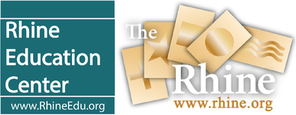Syllabus: Special Topics in the Paranormal - Non-traditional technologies for investigations
Course Description
This 4-week course will go beyond the tools usually associated with paranormal investigations. Students will examine a wide range of technologies and applications allowing for a deeper exploration of paranormal phenomena. Emphasis will be placed on properly deploying these technologies during field investigations and how to interpret the resulting data.
The course will explore both quantitative (numerical) and qualitative (experiential) data collection techniques. Topics will include understanding and measuring human physiology and biofields, testing non-local effects on random number generators, documenting the intuitive processes of investigators, and more.
Students will come away with a new appreciation for the complex relationships between various paranormal phenomena and an expanded set of tools to use during their own investigations.
Course Outline
Week 1: Field Work in Parapsychology
In this first week, we’ll briefly review relevant phenomena, and define the roles and relationships between equipment and investigators in field work. We will also gain an appreciation for a mixed methods approach (qualitative and quantitative) to field investigations through examples pulled from real-world case reports.
Week 2: Gadgets and Gear: Beyond Beeping Boxes and Blinking Lights
Over the years, paranormal researchers have amassed a vast tool box of devices to assist them in their field work. In this class, we’ll examine some atypical investigation devices, and also explore new ways to breathe life back into your existing toolkit using new techniques. Finally, we’ll take a look at resources to help you create your own investigation tools.
Week 3: The Human Instrument: Experiencing the Paranormal
While electronics can be helpful in documenting various aspects of paranormal investigations, incorporating phenomenological (experiential), physiological, and properly controlled psi-focused techniques can provide a deeper understanding of reported phenomena. Examples include field recording and analysis of psychophysiological data (heart rate, skin conductance, body temperature, etc.), dowsing, remote viewing, lucid dreaming, mobile ganzfeld, and the use and scoring of other types of standardized research instruments (questionnaires and surveys).
Week 4: Putting it all Together: Building a Better Investigation
In the final class we’ll bring all these elements together to see how mixed methods techniques can be deployed in the field. We’ll also review some specific experiments that students can try on their own. Finally, we’ll discuss ways to report findings to a larger audience so they can help add to the body of research findings.
Course Materials
There is no specific text for this class, however, students will be provided with short readings or videos which will help them to better understand content of the lectures.
Course Activities
Students will be expected to view the class broadcasts or the recordings of the classes each week and participate in any live discussions during class. Students will be expected to participate in weekly written discussion forums and activities. Each student will be expected to provide an original posting each week and to respond to at least one other student in the discussion forums.
One multiple choice or short answer final evaluation will be assigned after the 4th class. This will be due 10 days after the final class is broadcast.
Evaluation and Grading
Students who are taking the course for a grade will be assessed using a letter grade based on the standard letter grade format.
- A – 90 – 100
- B – 80 – 89
- C – 70 – 79
- D – 60 – 69
- F – Below 60
Participation in the forums is a large component of the grading, and substantive postings are necessary to get full credit for each discussion topic.
The following activities will be considered to contribute to the courses as follows:
Discussions (4) 40%
Final Evaluation (1) 60%
Total: 100%

